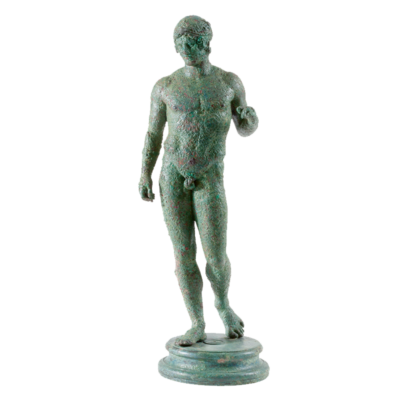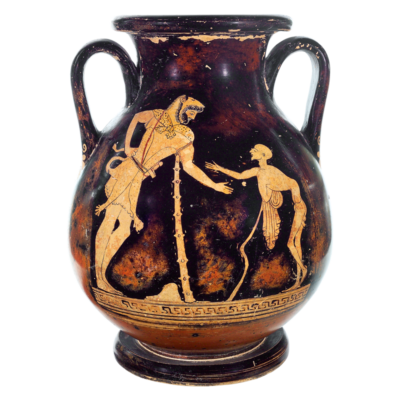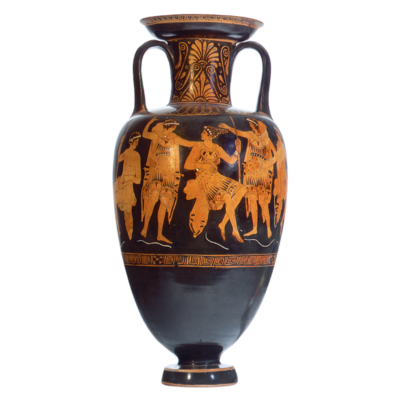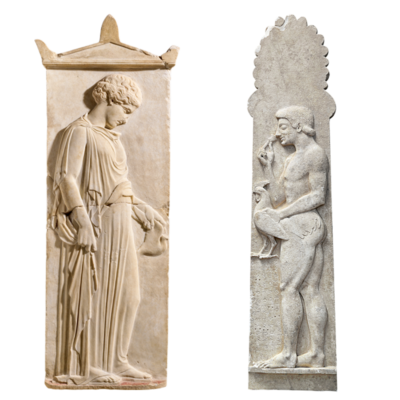The Dancer
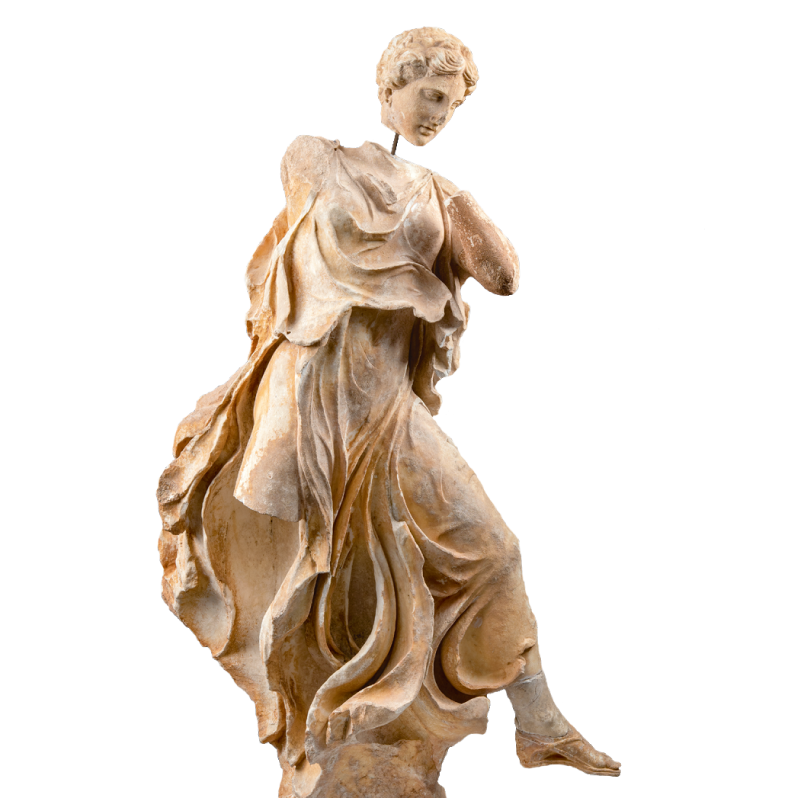
Marble statue of a dancing Lakaina (Laconian Maiden) by Kallimachos, an original work of the fifth century BC. The young girl wears a slit Laconian peplos with overfold (apoptygma) on the torso. On top of her head is a hole for inserting a kalathiskos (small basket). This original work probably stood originally on the Acropolis of Athens.
From the villa of Herodes Atticus at Eua/Loukou, Kynouria. 420 – 415 BC. Archaeological Museum of Astros 356α.
© Hellenic Ministry of Culture and Sports/Ephorate of Antiquities of Arcadia/H.O.C.RE. D. Photograph: Irini Miari.
Marble statue from the Classical Period representing a young dancer.
The facial features of the young girl, Dancing Lakaina, reflect nobility and grace. Combined with the plasticity in her body’s movement and clothing, the sculptor succeeded in expressing the joy of life and the celebration of the senses.
The artist depicted the female body, choosing to show her curves in a sensual way by revealing nude areas.
Small bronze figurine from the Archaic Period, representing a kore holding a bird in her right hand.
In this statuette, the kore figurine stands and looks at us straight on in a somewhat rigid way. We observe her clothing, where the tunic follows the shape of her body without ripples and strong creases, covering her body entirely. With a controlled movement of her left hand, she lifts her garment slightly. Even her shoes are strict and cover her feet above the ankles.
We can see that she is a stern and somewhat detached young woman.
From Psammidomourio hill, southeast of the Asklepieion at Lentas. Late Archaic period. Ephorate of Antiquities of Heraklion, excavation nos Χ1-2.
© Hellenic Ministry of Culture and Sports/Ephorate of Antiquities of Heraklion/H.O.C.RE. D. Photograph: Ioannis Papadakis-Ploumidis.
SEARCH & LEARN
• How does the artist depict the liberation of the female body in the sculpture of Lakaina?
• Artists’ interest in the body and movement has been reflected in a series of works utilizing different media. Nelly’s photogaphs, taken in 1930, are a link to ancient Kallos. See the similarities to the Dancing Lakaina.
DID YOU KNOW THAT...
The Archaic Period is expressed with strict forms and symbols, the Classical Period with the ethos of forms, and the Hellenistic Period with passion.
THINK
• Why is the form of Lakaina so liberated?
• Why is the figure of the Archaic Kore so rigid?
• What does the dance symbolize and what is conveyed through it?
OBSERVE
• Observe how the figure of the dancer symbolizes liberation of the female body. Which elements of the sculpture lead to this conclusion?
• See the difference between the two female figures in terms of body representation, facial expression, and clothing. List the contrasts.

